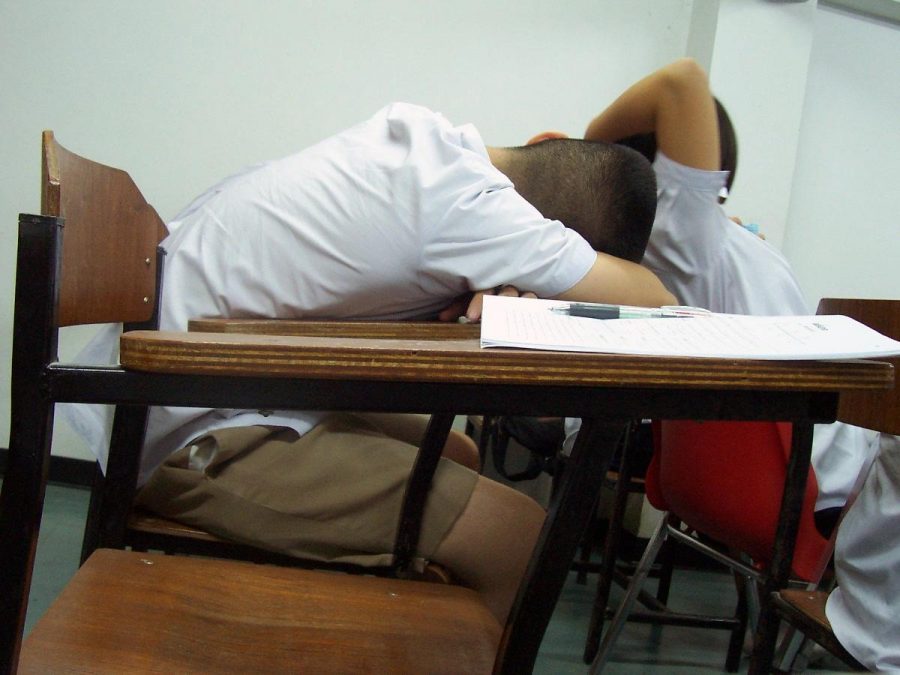Wildest Dream Turns into a Rude Awakening for California’s Middle and High School Students
The sleep of 3 million public middle and high school students hung in the balance on Aug. 31, as delegates gathered on the California Senate floor to vote on a landmark bill that would make starting middle or high school before 8:30 a.m. illegal in the Golden State.
An estimate in 2011-12 found that 75% of California’s schools that start before 8:30 a.m. would be impacted by the bill. The bill would be implemented by 2021 or by the time the districts’ collective bargaining agreement expires. Any costs incurred in the process would be reimbursed by the state.
Introduced by Sen. Robert Portantino and co-authored by Sen. Richard Pan, this bill sought to achieve what had thus far seemed impossible. Almost a year ago to the day, a similar bill had been defeated on the Assembly floor on Sept. 14, 2017. The bill’s chief opponent had been the California School Boards Association, which argued that rather than a statewide mandate, local school boards should be allowed to choose start times that work for their districts.
Sen. Portantino, who also authored the 2017 bill, doubled down on his efforts within months and reintroduced the bill, convinced that his effort serves both students’ best interests and overall public health.
On Aug. 31, 2018, with heavy advocacy from its proponents, the bill passed the Senate and the State Assembly floors by a hairwidth. In the Senate, 23 senators voted “aye,” 14 voted “nay” and three abstained. In the Assembly, 41 voted “aye,” while 34 voted “nay” and five abstained.
This result represented a huge triumph for the community that had long fought hard for this measure, including the grassroots organization known as Start School Later, Inc. and members of its California chapter, as well as numerous parents, scientists, citizens, healthcare professionals and many prominent scientific organizations such as the Centers for Disease Control, the American Academy of Pediatrics, the American Psychological Association, the American Medical Association and the American Academy of Sleep Medicine.
These groups relied on extensive scientific studies showing that obesity, substance abuse, fall-asleep vehicular crashes, depression, anxiety, suicidality, stomach ailments, headaches, absenteeism, tardiness, lower test scores and serious, chronic health conditions are associated with current school schedules.
The 2015-17 California Healthy Kids Survey in particular yielded alarming results: 19% of 9th- and 11th graders had considered suicide within the past year. An even greater number had felt chronically sad or hopeless: 26% of 7th-graders, 32% of 9th-graders and 34% of 11th graders. The Fairfax County, Va. Youth Survey further showed that for each one hour of less sleep, feelings of being sad or hopeless increased by 38%, the odds of seriously considering suicide increased by 42% and the odds of attempted suicide increased by 58% among adolescents.
Importantly, the achievement gap (i.e., observed lower rates of academic success among low-income children) has been attributed in part to early start times, which impact poor children more heavily.
In a recent editorial in the New York Times, journalist and high school science teacher Mr. Henry Nicholls declared that the practice of starting schools before 8:30 a.m. is “a tragic disregard for both the mental health of children and for science.”
Meanwhile, schools that have delayed start times have shown improvements in nearly all of these areas. A recent report by the RAND corporation indicated that delaying start times would be financially advantageous to students and communities in the long run. This is because well-rested students are safer drivers and more likely to avoid expensive, fall-asleep crashes, and also because they would achieve better grades that lead to higher-paying jobs.
Risks of early start times are pronounced in middle- and high-schoolers because of their biological rhythms, which dictate later sleep onset and wake-up times than other age groups. A start time of 7:30 a.m. for a teen has been likened to requiring a 4:30 a.m. start for a middle-aged adult. Simply telling adolescents to go to bed earlier is ineffective; they have a permanent “biological jet lag” that makes earlier sleep onset impossible, even if they follow common rules of sleep hygiene, including limiting caffeine, avoiding alcohol, getting exercise and avoiding screens in the nighttime hours.
Nonetheless, the majority of America’s schools continue to require middle- and high-schoolers to awaken and arrive at school at times that pose a form of ongoing biological stress and lead to the many health, academic and safety outcomes listed above.
Under the proposed bill, school districts would be given three years to implement changes; rural areas, which may face logistical challenges, would be able to apply for waivers. The bill additionally encourages school districts to post information on their websites about the costs of sleep deprivation on adolescents, the benefits of later school start times, stories of other schools who made the change and examples of successful strategies in delaying the start times.
Only one obstacle remained: the bill could not become law until it was ratified by Governor Jerry Brown.
Almost immediately after the bill was passed, a heavy counterpush for its veto began, composed largely of the California Teachers Association and the California School Boards Association.
On Sept. 20, 2018, Gov. Brown vetoed the bill. Given the tight margin through which the bill had initially passed, Gov. Brown’s veto will most likely stand.

Anya Jayanthi '21 is thrilled for her fourth year with The Banner! As a co-editor for the S&T section, she hopes to continue exploring the greater...


